Social Network Theory for Firefly
We’ve been working very hard on the Firefly project.
See FireFly in action.
FireFly is ready to light your way on your social journey. We’ve had a mention of the project at Art and Science Journal. FireFly prototypes will be at the Supernova artists’ party tonight!
FireFly is the first of our creations in the Lumipendant project.
What’s Cool About It?
It’s a social pendant that will show different light patterns, colors based on your social behavior. Firefly uses invisible infra red light to communicate with it’s peers. It can interact directly with humans, themselves and other devices such as televisions. The device is capable of turning TV sets off an on, changing channels and volume and so forth.
FireFly isn’t just a social facilitator at parties!
- You can impress your friends by learning and talking about Social Network Theory (see primer below).
- FireFly is based on the very famous Arduino microcontroller! It’s open and hackable like any Arduino. Welcome to the maker revolution! How can you customize yours? You can start learning about how to program logic and control into your own projects. When you acquire your FireFly, you are acquiring not just an Arduino (like the ones available all over and at RobotShop), but it also has:
- 8 RGB LEDs (equivalent to 24 colored LEDs), an LED controller, a switch, a tilt switch, infra red emitter, infra red detector, battery pack, serial converter, an 8K eprom and USB connector. So it’s a great science kit to learn about hacking, electronics and so forth.
- Being a social pendent, it’s very compact and easy to carry. All you need is a laptop and a USB connector and you have a portable Arduino lab and a portable social network theory lab.
- You can learn about wearable computing and electronics.
- You can learn about color theory. Check out this explanation of the primary colors.
- We are considering having workshops to teach people how to program Arduinos! Interested?
The Crowd is the Medium
We hope this device will be fun and create awareness not just of the maker community but also social network theory (become an instant expert by reading below).
We’ve been experimenting with the personality of FireFly (controlled by software). FireFly has individual traits such as metabolism and happiness. It will work together with your own traits ranging from shyness to boldness, other FireFly’s and their keepers and other devices such as televisions.
Social Network Theory Primer
I wanted to put my mark on the project by including social elements.
SNT new to you? Feel socially awkward when people talk about it? No need to panic! You can impress your friends simply by memorizing this list of fancy words! Not only that it’s an amazingly interesting area of sociology.
Social Graph vs. Social Network: A fancy word for Social Network.
Nodes, Ties, Vertices and Edges: Nodes are the actors or people in a network. Ties are the connections between them. In graph theory they use the term edge for the nodes and vertices for the ties. How rude.
Strong Ties vs. Weak Ties: Socially healthy people tend to have a low number of strong ties which take a lot of effort to maintain. Also a larger number of weaker ties since weaker ties are less effort to maintain. Surprisingly there is a lot of benefit from the weak ties.
Dunbar Limit: The tenancy for group size to tend to be about 150. His research shows that there is an upper limit to the number of people we can socialize with based on our brain size and capacity. Also time and other resource limitations.
Centrality: How connected an individual is in a network. There are many ways to assess this.
Degree Centrality: A simple measurement of centrality based on just the number of connections an individual has.
Eigenvector Centrality: An elaborate way of measuring centrality. Degree matters but of course for each connection you look at how connected they are. Having connections individuals with more connections is more valuable than those with few connection. You look at your connections’, connections’, connections’ too. And so on. It’s an accurate measure but is costly to calculate. Google has ways of estimating it efficiently and it is part of the basis for their great success.
Meme: A meme is behavior, ideas or believes that are copied. Scientists often liken meme propagation through a population to evolution or a contagions because memes have the main elements of evolution (variation, mutation, competition, and inheritance).
Structural Equivalence: Nodes in a network that have similar ties are considered to be structurally equivalent.
Directed Network vs. Undirected Network: A tie in a network can have direction or not. In a restaurant, the server sells you food but you don’t sell anything to the server. So your tie with the server is directed. It’s in one direction. On the other hand in social where there is conversation, there will be ties that are in both directions. You are talking to somebody and they are talking back. It’s in both directions so it’s called undirected.
Strength of Weak Ties: This is a famous paper from Granovetter at Stanford University. It is highly influential and argues that you will benefit more from weaker ties than you expect.
http://www.youtube.com/watch?v=-Bm93gN1zJg
Scale Free Networks, Random Networks, Hubs and Authorities: Networks may have randomly formed connections or other patterns in how connections form. Humans often form scale-free networks where some people are very connected and then others are not. With a scale-free network the distribution of ties follows a power law. The more connected nodes in a network are called Hubs and Authorities.
Propinquity: This is a term used to describe the closeness that two nodes in a network have. It was originally used to describe geographic closeness. Your neighbors for example would have more propinquity to you than people across town. It is now used to describe any kind of closeness including interests, hobbies, employment. It is more economical to form ties with people with propinquity.
Homophily: Tendency for people with similar interests to be connected.
Small World Phenomena: This phenomena was demonstrated in a famous experiment on postal routing. This is the source of the term “Six Degrees of Separation“.
Milgram’s Small World Experiment: See Small World above.
Spanners and Peripherial Players : This is part of the basis for the strength of weak ties.
Transitivity: This is a tendency for you to make connections to your friends connections.
Trust Transitivity: Do you follow recommendations from friends? This is the mechanism.
Reciprocity: This is a balance of flow in a network.
Network Layers: There is more than one type of tie that can be relevant. For instance if you are sitting in a pub there is a conversation layer. If you are engaged in a conversation with someone, then that is a tie. There is also a commerce layer. The server is selling food and drink. This layer is typically a directed network. There is a handshake network. If you’ve shaken hands with someone then you have a tie with them. There is a visibility network. Who can see who. All these layers can interact. For instance, your server can introduce you to someone. You can discover a new friend from the visibility network layer and then engage them in the conversation or commerce layer.
Social Routing: The means that information, support and other things find paths through a Social Network
Structural Holes: If a network is clustered, each cluster may have repeated information within itself. But the clusters may have differences in the information or opportunity within. These differences are called structured holes. This differences are great opportunity for any people who span the network. This is typically peripheral or boundary players.
Other cool bits of vocabulary: Embeddedness, Propagation, Dyads, Triads, Meso-Level, Macro-Level, Topology, Chaos Theory, Social Capital, Role Theory.
The Cathedral and the Bazaar: Architecture of Control and Flow
A Cathedral conjures an image of a top down control of a business or people. Or a top down flow of information.
Many people think it’s how things should work in business and in other organizations.
A Bazaar on the other hand conjures an image of being disorganized.
There have been some notable examples of organizations being structured like a Bazaar that have produced some very high level and important outcomes.
The development of many open source software products including Linux! In fact the term “The Cathedral and the Bazaar” was coined by Eric Raymond (aka ESR) who is a notable software developer in the Open Source community.
Many successful art and creative communities tend to be organized this way.
The notion has also even showed up on large corporate structure through flatter management structure.
How could such an apparently disorganized organizational structure work?
In Graph Theory, a hierarchy is an example of a graph (aka network) that has certain constraints put on the connections that it can have. You can only be connected to superiors and subordinates. It is also a directed graph. Control is directional from top to bottom.
Decisions have to get made and work has to get done. To make decisions, information has to flow from bottom to top to understand the conditions the organization faces. For larger organizations this could easily cause overloading. The further up we go in the hierarchy, the more nodes there are downstream. So a hierarchy suffers from issues of scalability.
Further, because control is from top to bottom and given that information may bottleneck because of these scalability issues, hierarchies tend to rely more heavily on documented rules. This consumes a lot of resources because of the maintenance and policing of these rules.
A Bazaar structure or a more generalized graph (or network) structure solves some of these issues. For one thing by permitting connections anywhere, the network can evolve to help information flow to the points of leadership. Also, this structure can scale up and down. It is more resilient to random loss of communication or people because the graph may be scale free. Because traffic (information and support) can move more freely there is less dependency of rule based thinking and more opportunity for freedom and common sense. With less constraints on what information is shared with whom and the ways in which an individual can contribute, creativity and problem solving can flourish.
Many organizations may have a structure that has several nodes organized in a hierarchy but there is no resistance to other ties that theoretically break the hierarchy. This might be the future for the organization of people.
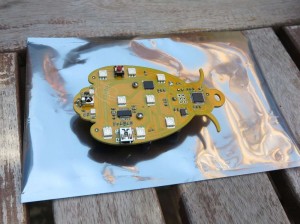

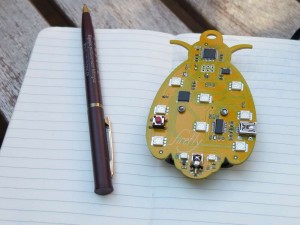
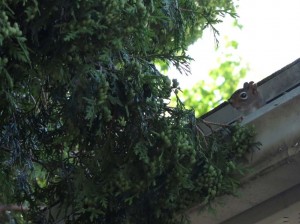
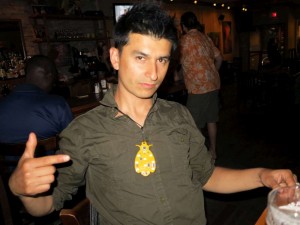
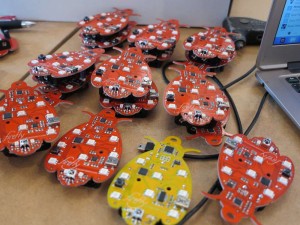
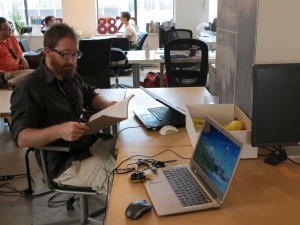
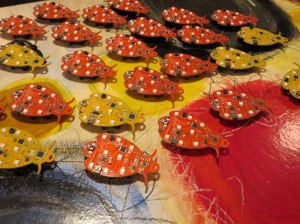
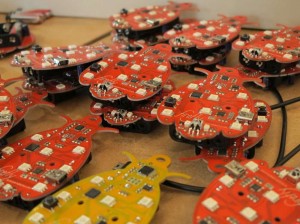
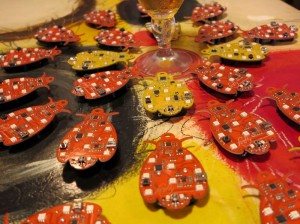

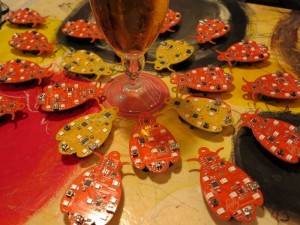
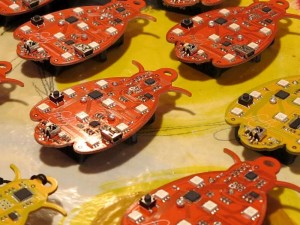

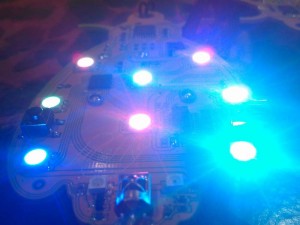

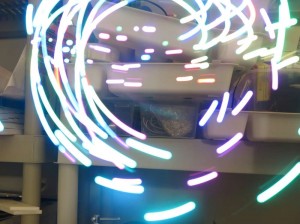

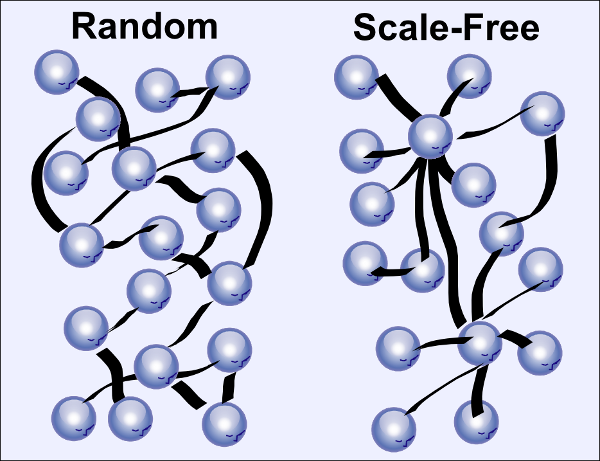
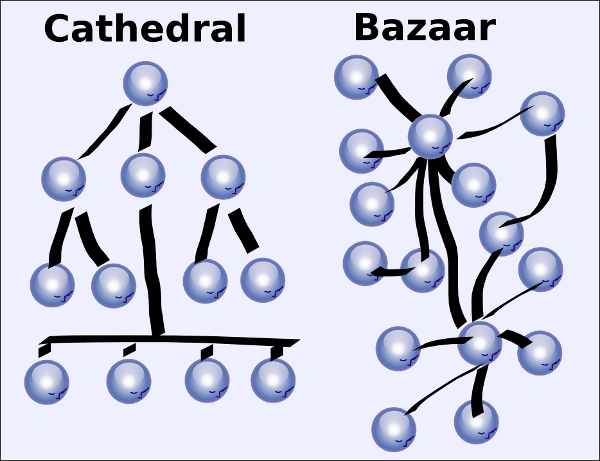
[…] sensors and luminescence that have evolved to facilitate human connection. You may want to read the Social Network Theory Primer to learn more about human […]